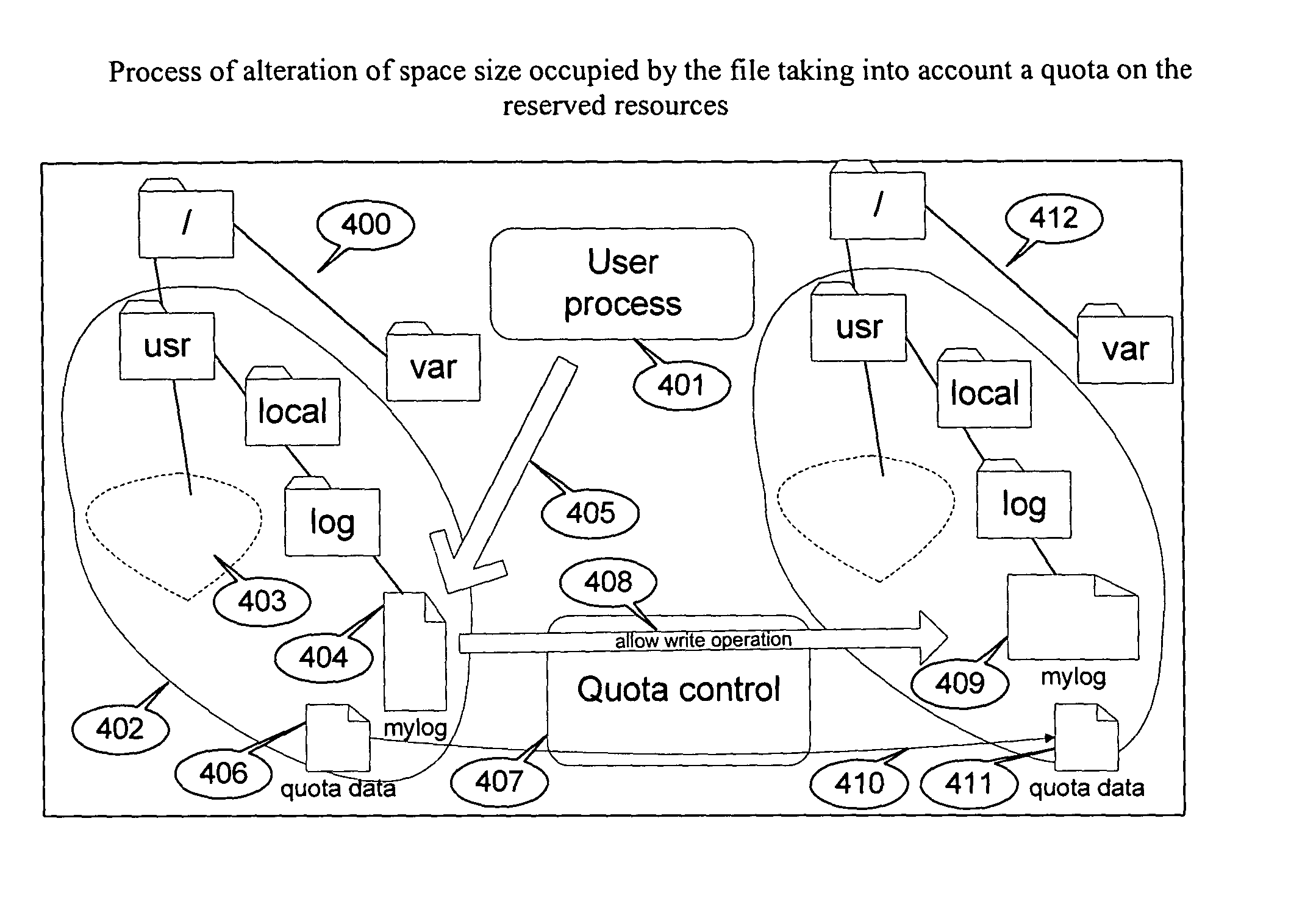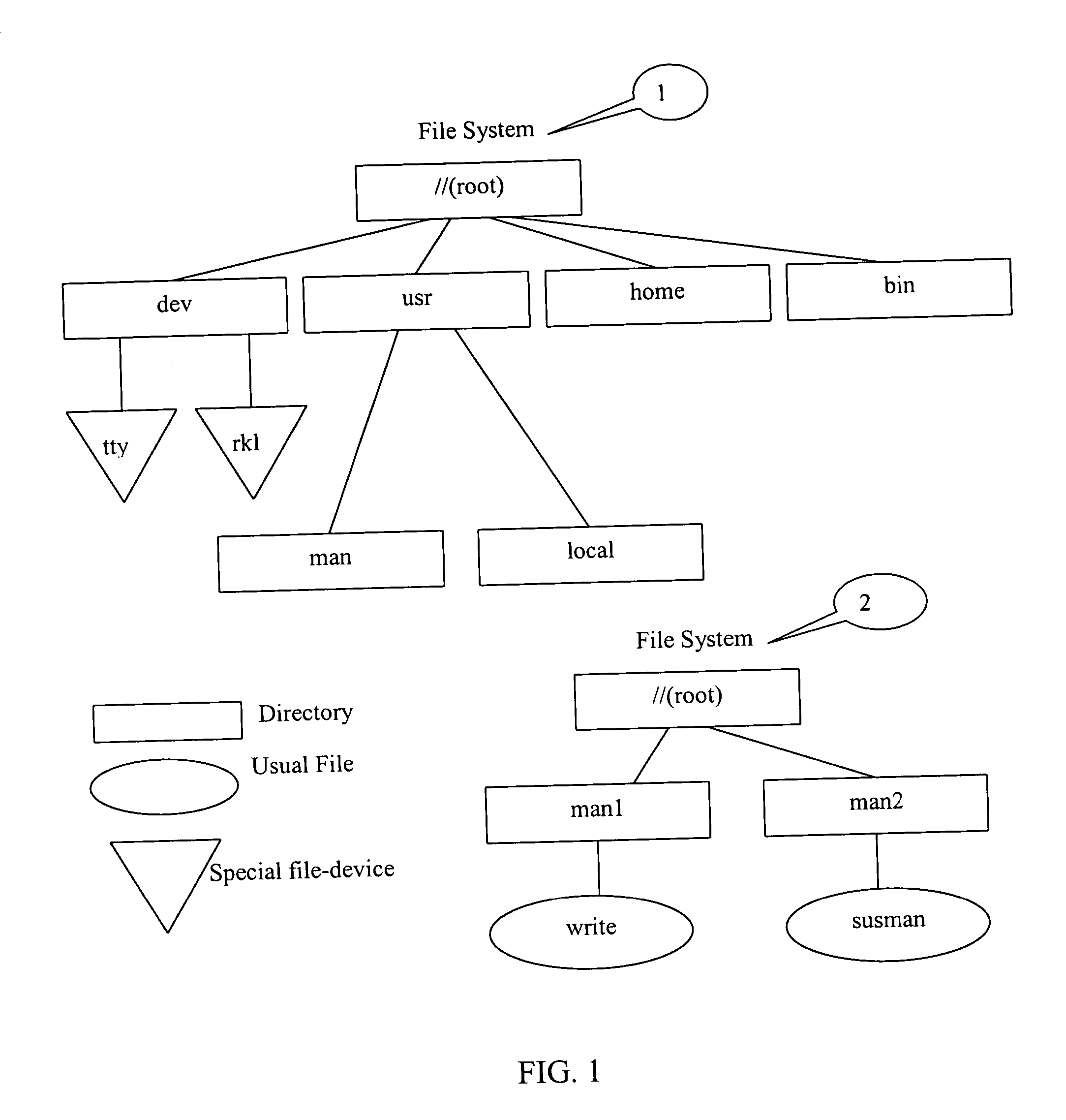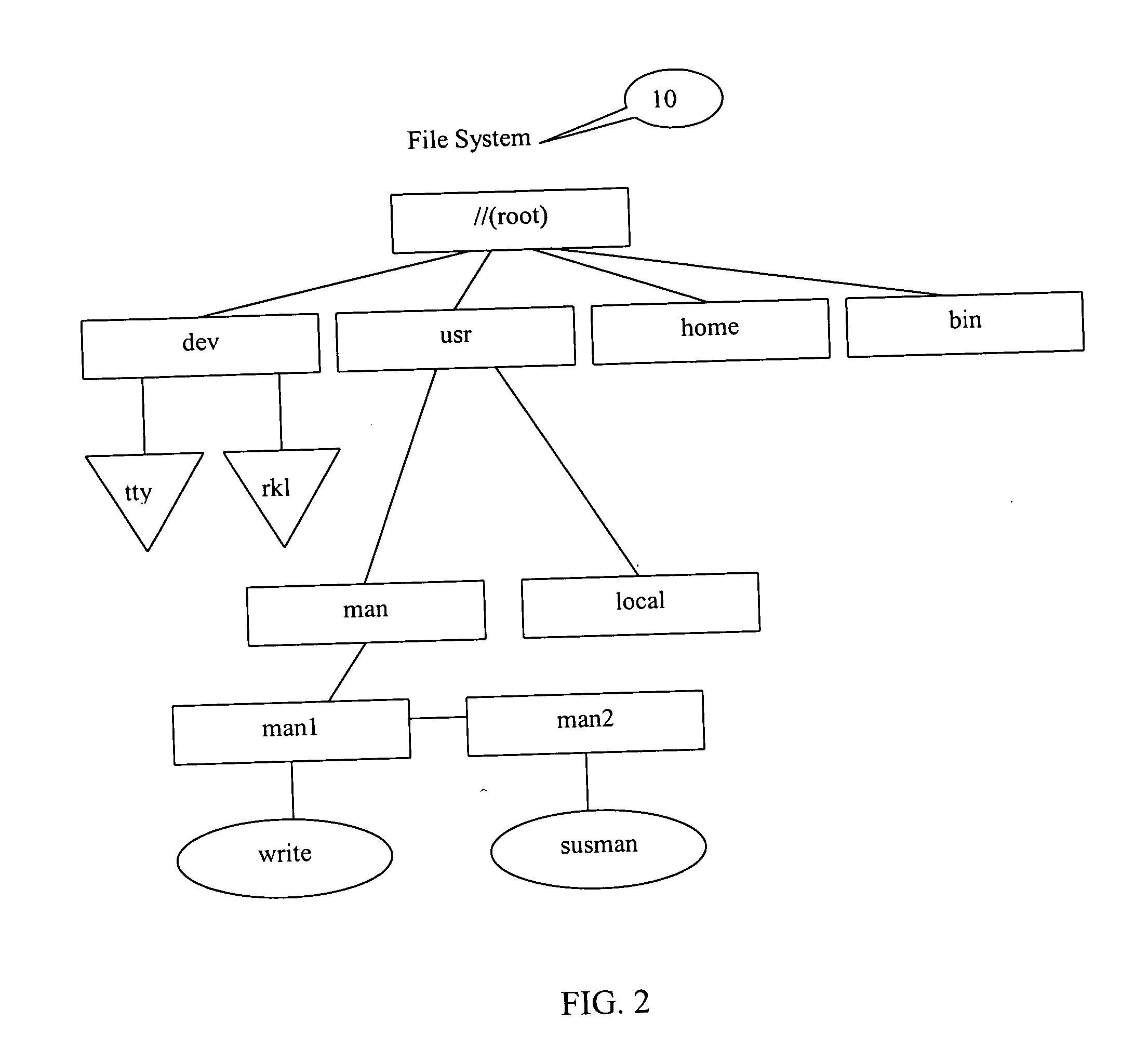Method of implementation of data storage quota
a data storage and quota technology, applied in the field of computer data storage, can solve the problems of oses not having disk quotas, limiting the availability of disk resources for file system users, and affecting system efficiency,
- Summary
- Abstract
- Description
- Claims
- Application Information
AI Technical Summary
Benefits of technology
Problems solved by technology
Method used
Image
Examples
Embodiment Construction
[0026] In the following description, numerous specific details are set forth to provide a more thorough description of embodiments of the invention. To one skilled in the art, however, it is apparent that the invention may be practiced without these specific details. Well-known features have not been described in detail so as not to obscure the invention.
[0027] File System Mounting
[0028] Embodiments of the present invention can be implemented within a computing system having several disk devices. For example, a computing system can include a hard disk device (HDD), a floppy disk device, and a CD drive device. Powerful computers as a rule have several disk storages with installed Redundant Array of Independent (or Inexpensive) Disks (RAIDs). Moreover, even one physical device may be represented as several logical disk devices using operating system tools, particularly, by dividing disk space into partitions. Accordingly, an embodiment of the present invention provides a method and ...
PUM
 Login to View More
Login to View More Abstract
Description
Claims
Application Information
 Login to View More
Login to View More - R&D
- Intellectual Property
- Life Sciences
- Materials
- Tech Scout
- Unparalleled Data Quality
- Higher Quality Content
- 60% Fewer Hallucinations
Browse by: Latest US Patents, China's latest patents, Technical Efficacy Thesaurus, Application Domain, Technology Topic, Popular Technical Reports.
© 2025 PatSnap. All rights reserved.Legal|Privacy policy|Modern Slavery Act Transparency Statement|Sitemap|About US| Contact US: help@patsnap.com



